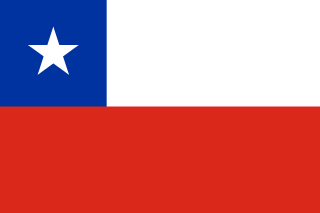
Sushi is a traditional Japanese dish made with vinegared rice, typically seasoned with sugar and salt, and combined with a variety of ingredients, such as seafood, vegetables, or meat: raw seafood is the most common, although some may be cooked. While sushi comes in numerous styles and presentation, the defining component is the vinegared rice, also known as shari (しゃり), or sumeshi (酢飯).

Sashimi is a Japanese delicacy consisting of fresh raw fish or meat sliced into thin pieces and often eaten with soy sauce.

Roe, or hard roe, is the fully ripe internal egg masses in the ovaries, or the released external egg masses, of fish and certain marine animals such as shrimp, scallop, sea urchins and squid. As a seafood, roe is used both as a cooked ingredient in many dishes, and as a raw ingredient for delicacies such as caviar.

The cuisine of California reflects the diverse culture of California and is influenced largely by European American, Hispanic American, East Asian and Oceanian influences, and Western European influences, as well as the food trends and traditions of larger American cuisine.

Tobiko (とびこ) is flying fish roe in Japanese cuisine, known for its use in sushi.

The history of sushi began with paddy fields, where fish was fermented with vinegar, salt and rice, after which the rice was discarded. The earliest form of the dish, today referred to as narezushi, was created in Southeast Asia from where it spread to surrounding countries. Narezushi spread to Japan around the Yayoi period. In the Muromachi period (1336–1573), people began to eat the rice as well as the fish. During the Edo period (1603–1867), vinegar rather than fermented rice began to be used. The dish has become a form of food strongly associated with Japanese culture.

California roll or California maki is a uramaki containing imitation crab, avocado, and cucumber. Sometimes crab salad is substituted for the crab stick, and often the outer layer of rice is sprinkled with toasted sesame seeds or roe.

Poke is a dish of diced raw fish tossed in sauce and served either as an appetizer or a main course.
A dynamite roll is a Makizushi type of Western-style sushi. It usually contains a piece of shrimp tempura, avocado, and cucumber. It can also include proteins like salmon, crab, tuna, hamachi/yellowtail, vegetables like radish sprouts or oshinko, and garnishes like masago/tobiko. It is combined together with a sauce consisting of kewpie, Worcestershire, soy sauce, Sriracha or wasabi, and sometime garlic.

Chilean cuisine stems mainly from the combination of traditional Spanish cuisine, Chilean Mapuche culture and local ingredients, with later important influences from other European cuisines, particularly from Germany, the United Kingdom and France. The food tradition and recipes in Chile are notable for the variety of flavours and ingredients, with the country's diverse geography and climate hosting a wide range of agricultural produce, fruits and vegetables. The long coastline and the peoples' relationship with the Pacific Ocean add an immense array of seafood to Chilean cuisine, with the country's waters home to unique species of fish, molluscs, crustaceans and algae, thanks to the oxygen-rich water carried in by the Humboldt Current. Chile is also one of the world's largest producers of wine and many Chilean recipes are enhanced and accompanied by local wines. The confection dulce de leche was invented in Chile and is one of the country's most notable contributions to world cuisine.

Sushi pizza is a Canadian dish that originated from Toronto and a fusion of sushi and pizza often served in the Greater Toronto Area, conceptualized by Kaoru Ohsada no later than May 1993 as a Nami Japanese Seafood Restaurant chef. It uses a slightly crispy yet chewy fried rice patty as the base and is topped with a layer of sliced avocado, a layer of sliced salmon, tuna or crab meat, a drizzle of blended mayonnaise and wasabi powder and is served in wedges. Nori, pickled ginger, and roe are sometimes also served as toppings or sides.

Fancy Feast is a brand of cat food from Nestlé Purina PetCare. Introduced by the Carnation Company in 1982, it was originally offered in seven flavors of wet food.

This is a list of prepared-foods list articles on Wikipedia.

Seafood pizza is a pizza prepared with seafood as a primary ingredient. Many types of seafood ingredients in fresh, frozen or canned forms may be used on seafood pizza. Some retail pizza chains, as well as smaller restaurants, offer seafood pizzas to consumers.














